
- Sustainable Planet -
- 5mins -
- 982 views
Energy giant Ørsted to grow coral under offshore windmills
The Danish utilities giant Ørsted is going to experiment with growing coral on the frames of wind turbines in the sea near Taiwan, hoping to improve the biodiversity around its wind farms.
Coral on offshore windmills
The experiment follows a successful test two years ago in a test environment. Next month, the Danish company will start the world’s first pilot at sea. To that end, it has targeted four wind turbines in the Greater Changhua offshore wind farm in the warm waters off Taiwan. Ørsted will collect coral eggs washed up on beaches that would otherwise be lost. The coral spawn is then placed on the windmills’ jacket frame (legs) just below the surface of the water. That way the coral is exposed to enough light and has the best chance to grow. The waters around the wind farm also have a relatively stable temperature, which benefits the coral.
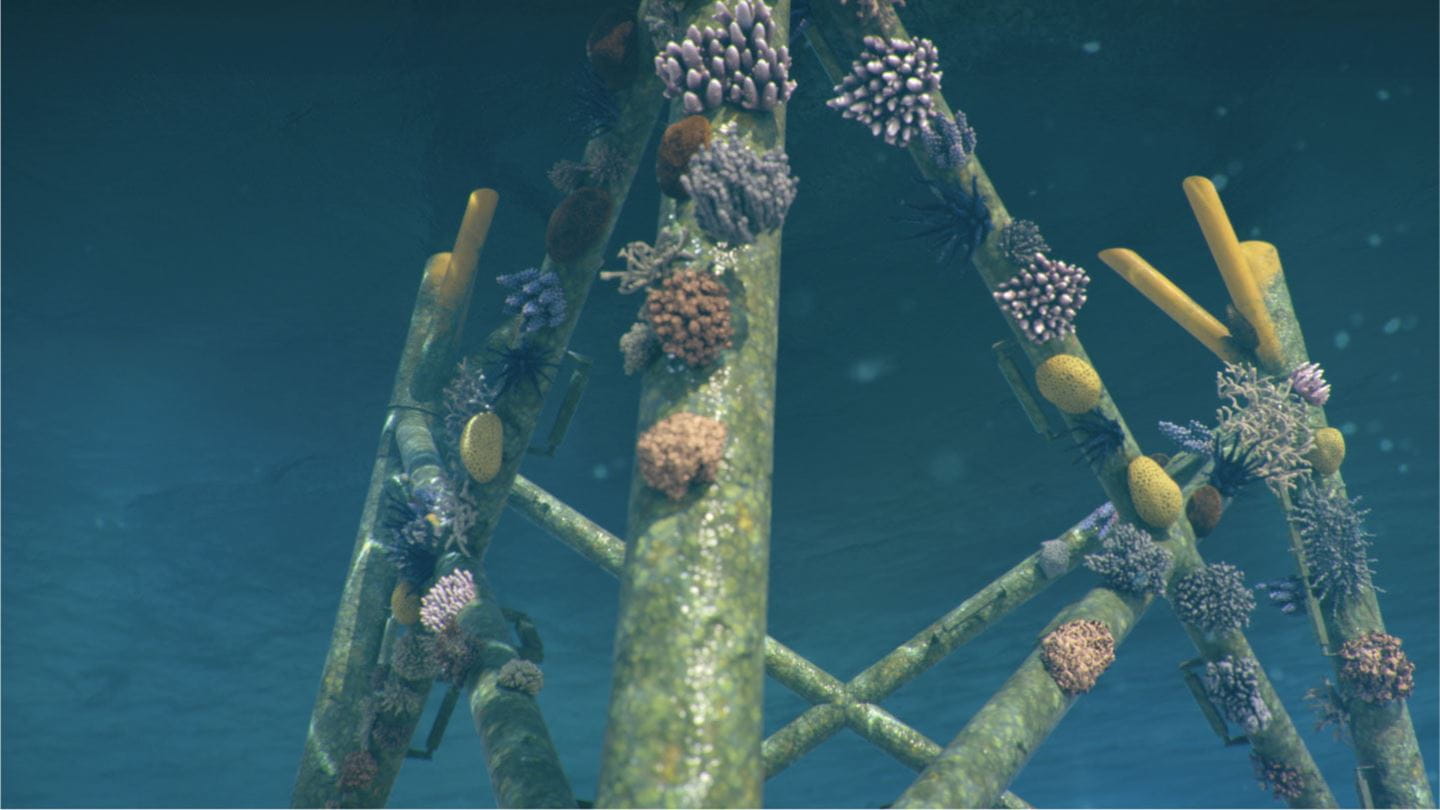
The energy company’s project is in line with the ambition to be ‘net positive’ in terms of biodiversity by 2030. For all their projects that affect plants and animals in places, it wants to improve biodiversity elsewhere. “Governments are working on a significant expansion of offshore wind energy,” said Mads Nipper, chairman of Ørsted. “I am convinced this expansion can improve the biodiversity of the ocean.” Source: Ørsted
Giving corals a home among tropical wind turbines
Near the Penghu Islands, off the west mainland of Taiwan, Ørsted and their partners from the Penghu Marine Biology Research Center are preparing to take tens of thousands of coral larvae by boat to the foundations of four offshore wind turbines at the Greater Changhua offshore wind farms. If the larvae succeed in settling on the foundations, this could be the start of a completely new approach to coral restoration.
For this proof-of-concept trial, surplus indigenous coral spawn will be collected from the shorelines of the Penghu Islands and incubated in a laboratory until they become viable coral larvae. After this, they can be taken to the wind turbine foundations, 35-60 km off the coast, and helped to settle there.
If the trial is successful and can be scaled up, Ørsted‘s hope is that large numbers of larvae from subsequent generations of coral will be carried by ocean currents away from the offshore wind farms and settle on naturally occurring reefs, helping them to thrive.
Source: Ørsted
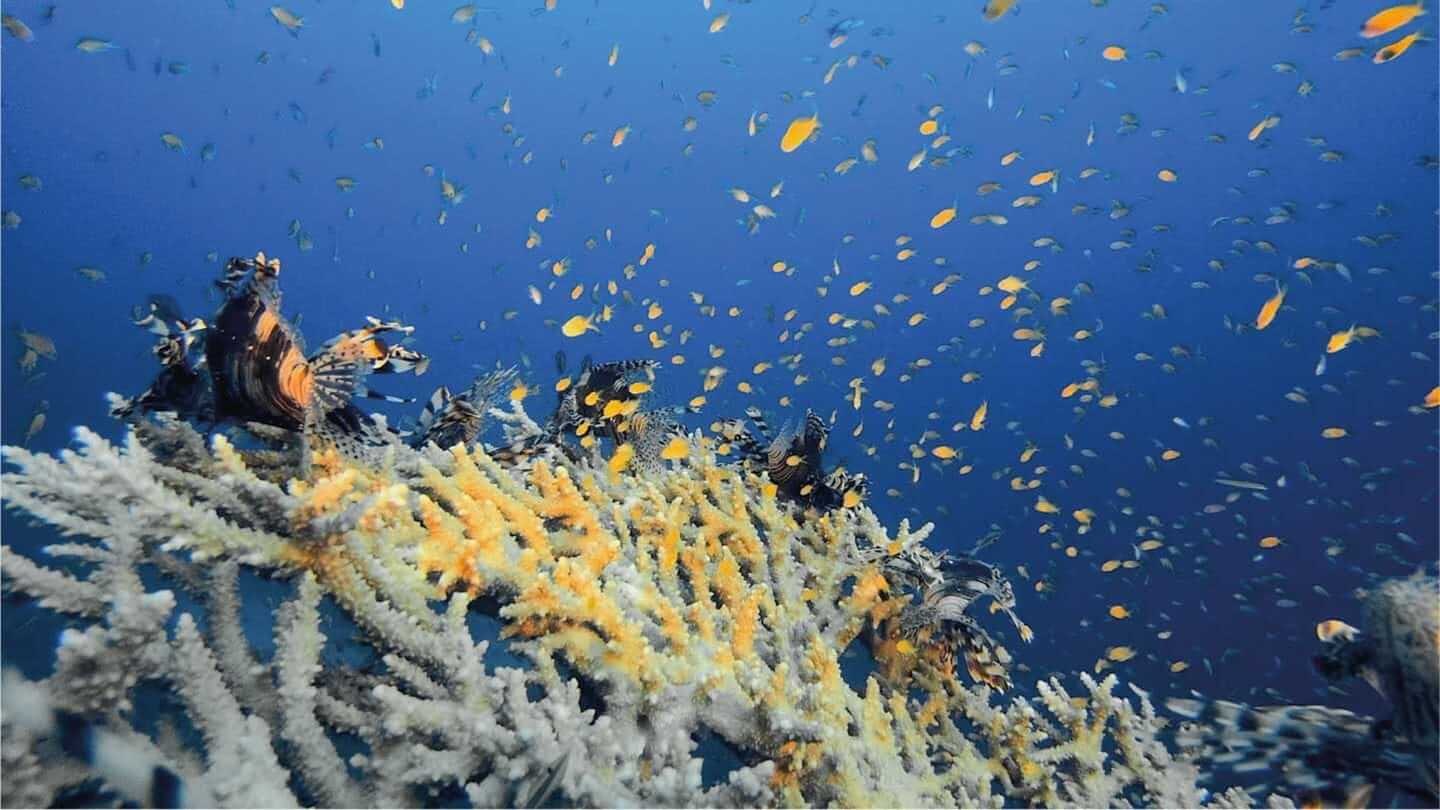
How much could marine life benefit in the long term? If the proof-of-concept trial on four wind turbines is successful, the next step is to develop a method where the concept can be applied to a larger area on another wind farm project. Ultimately, the concept could be applied to offshore foundations of any kind in tropical waters around the world, boosting biodiversity. Source: Ørsted
What’s the science behind the ReCoral project, and is it invasive?
Coral occurs naturally in such shallow waters that high surface temperatures can cause coral bleaching. However, in the deeper waters where offshore wind turbines are installed, a much more stable temperature is maintained, thanks to the circulation between the warmer water at the surface and the cooler water from below.
The foundations of offshore wind turbines provide a unique environment where corals can grow close enough to the surface to receive enough sunlight, but without being exposed to high temperatures. This limits the risk of coral bleaching.
Ørsted’s approach to larvae sourcing is non-invasive. They only collect surplus coral egg bundles that wash up on shorelines, rather than removing anything from existing coral ecosystems.
Corals release billions of eggs – so many that they colour the water’s surface pink. Only some of these are fertilised and become larvae. The eggs Ørsted collect from shorelines are among those that wouldn’t otherwise survive.
Collecting them therefore has no impact on the corals that originally released them, nor on the propagation of coral species.
Source: Ørsted
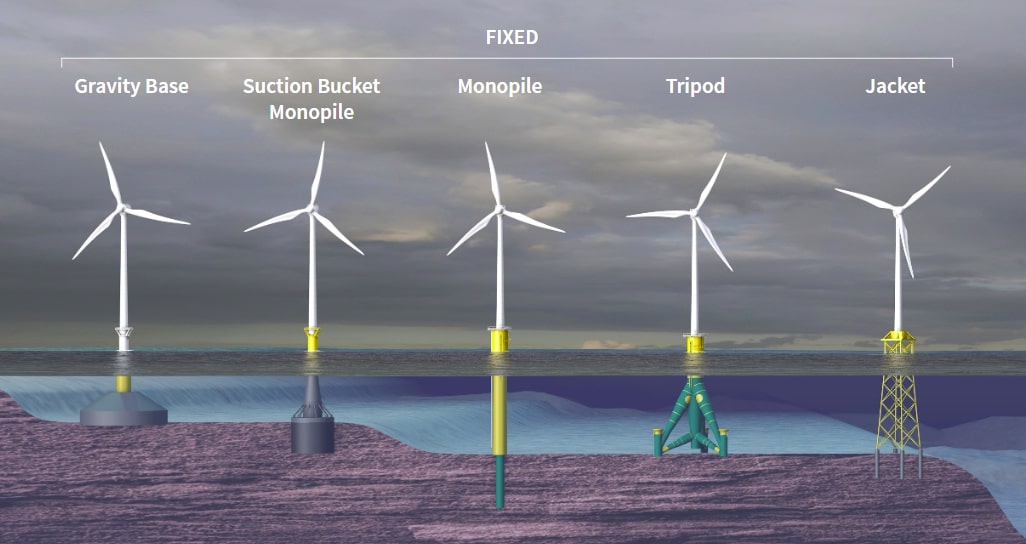
Ørsted will be transplanting coral onto turbines with jacket foundations. There are different types of offshore wind turbine foundation on which the turbine can be installed, depending on the depth and substrate. Jacket foundations (far right) are used at transitional depths (20-80m) and feature a lattice framework that comprises three to four anchoring points driven into the seafloor. It is onto these type Ørsted will be transplanting coral. Source: tethys.pnnl.gov
How do Ørsted collect the eggs, nurture them in the lab, and help them attach to the wind turbines?
A marine biologist collects coral spawn at the shoreline using a plastic cup, entering the water at depths of up to 0.5 m to avoid collecting coral spawn that’s been washed over the sand, as this could affect its viability.
Collected coral spawn is then incubated in rearing containers in an onshore laboratory. On day five of incubation, Ørsted check how many eggs have created viable coral larvae.
At the wind turbine foundation, the coral larvae are released into custom-made seawater enclosures that are attached to the foundation with magnets. Neoprene sealing lines the enclosure, and a mesh cover allows the enclosures to be replenished with the surrounding seawater.
The larvae are left in the enclosures for four days, giving them time to attach themselves to the foundation. After this, they remove the mesh cage structures, exposing the coral to the surrounding water column and allowing them to grow.
For the seeding of coral larvae in the proof-of-concept trial, 1 m2 areas on four separate foundations will be used. The areas will be positioned 1 m below the lowest tide level. This will ensure that the corals are submerged by water, receive an adequate amount of light, and are accessible for deployment and monitoring purposes.
Source: Ørsted
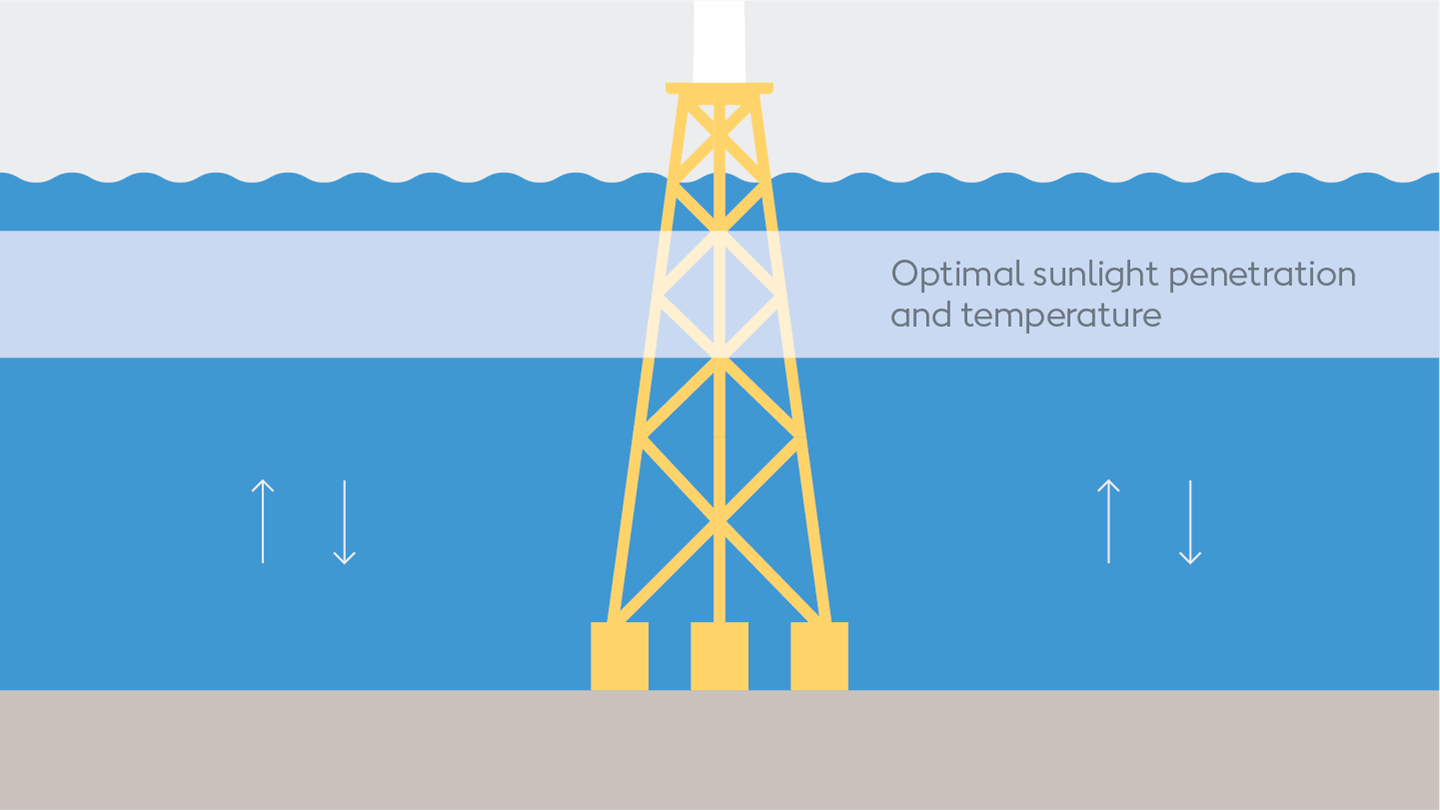
The coral spawn is placed on the windmill frame just below the surface of the water. That way the coral is exposed to enough light and has the best chance to grow. The waters around the wind farm also have a relatively stable temperature, which benefits the coral. Source: Ørsted
Turbine-born larvae as a lifeline for natural reefs
Mature corals successfully thriving on offshore wind turbine foundations will release their own spawn, which could be carried by ocean currents to settle naturally elsewhere. This could boost genetic connectivity and support the restoration of existing coral reefs.
Larvae generated at offshore wind farm sites could also be captured, then transported to and released at naturally occurring reef locations.
In either case, restoring naturally occurring reefs would, in turn, support healthy stocks of fish and other reef species.
In the latest coral reef restoration guide released by the United Nations Environment Programme, larvae release is considered as ‘potentially one of the most scalable methods for coral reef restoration’. Sharing findings with the coral conservation community. Ørsted say they’ll share the techniques they develop and the lessons we learn with the broader coral conservation community and with other wind farm developers. Whether or not their pilot succeeds, the findings will be useful for future endeavours.
Source: Ørsted
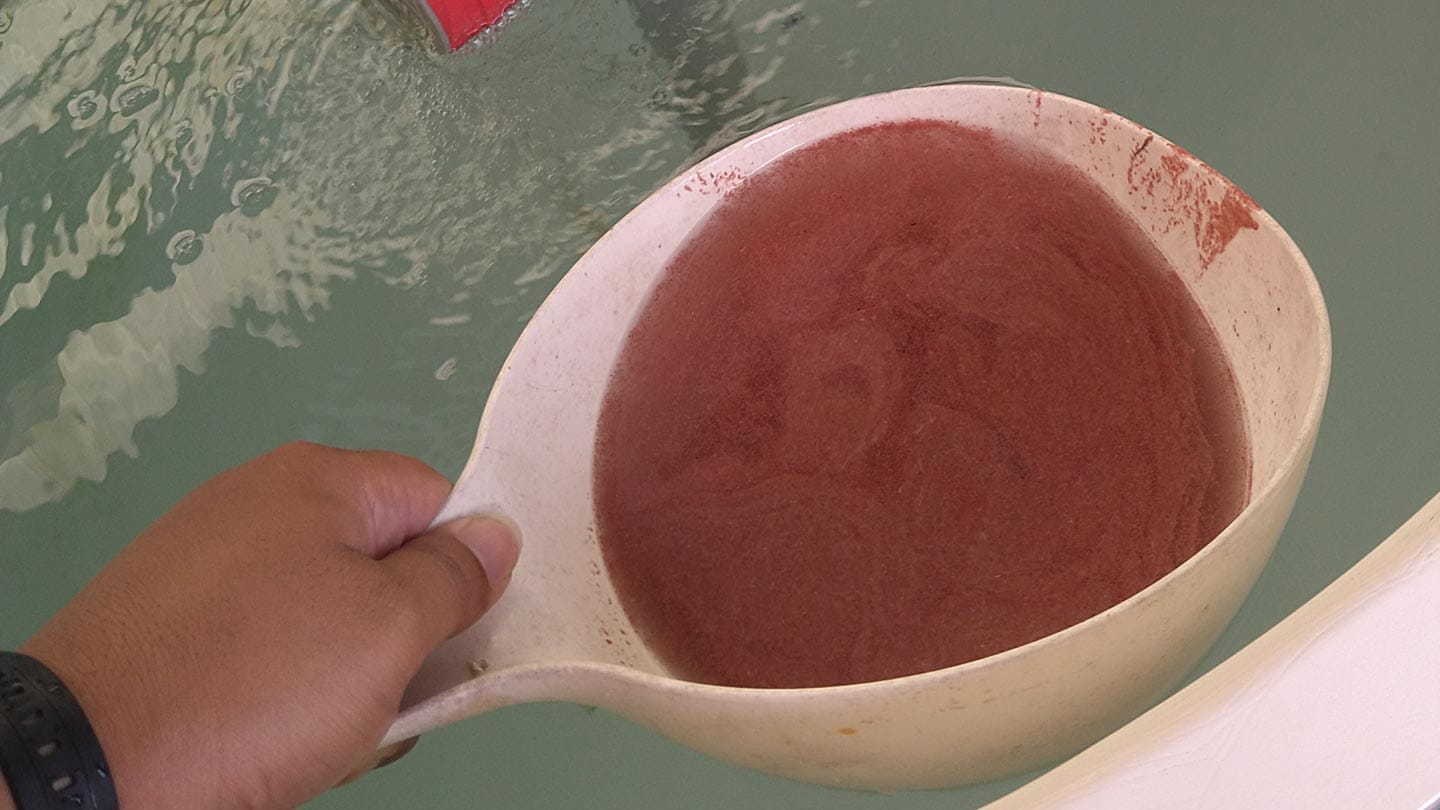
A marine biologist collects coral spawn at the shoreline using a plastic cup. Collected coral spawn is then incubated in rearing containers in an onshore laboratory. On day five of incubation, Ørsted check how many eggs have created viable coral larvae. At the wind turbine foundation, the coral larvae are released into custom-made seawater enclosures that are attached to the foundation with magnets. Source: None
This article was originally published on May 19, 2022.

